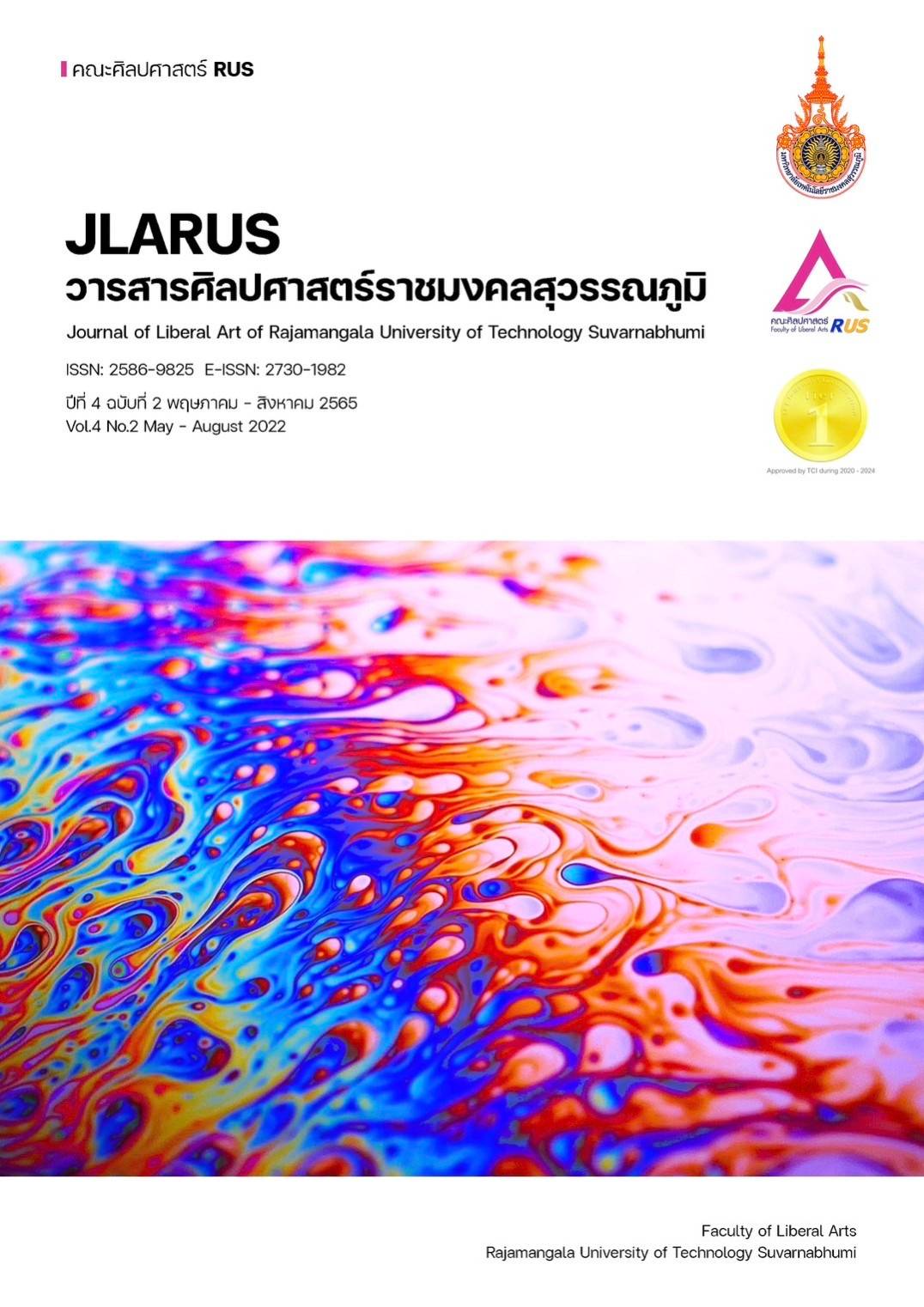CAUSAL RELATIONSHIP OF ONLINE INSTRUCTIONAL MEDIA AFFECTING LEARNING AMONG STUDENTS STUDYING IN HIGHER EDUCATION UNDER THE COVID-19 SITUATION
Main Article Content
Abstract
This article aimed; 1) to explore media that is being taught; 2) to assess the satisfaction of using online instructional media; and 3) to study the causal relationship and to examine the coherence of the model with empirical data influencing food and beverage service education after being affected by the COVID-19 situation. This research is quantitative research. The sample group used in this research was 162 students studying in food and beverage service. The instrument used for data collection was questionnaires. The statistics used for data analysis were descriptive statistics inferential statistics.
The results showed that the most engaging online materials for students were WebEx meetings, followed by Microsoft Teams and Google Hangouts Meet, and satisfaction with the use of online learning materials was perceived as a user experience. With the professionalism of the teachers as well as gaining experience from introducing the teacher's program and experiencing the technology from creating an interesting experience to learning affecting the variables used in the study, the analysis found that the ease of use of the program model, satisfaction with using the programs, experience in using the program, intention to learn from using the programs, and willingness to recommend the programs that have been used consistent with empirical data statistically significant at the .001 level.
Article Details

This work is licensed under a Creative Commons Attribution-NonCommercial-NoDerivatives 4.0 International License.
References
ขนิษฐา จิตแสง. (2557). ความสัมพันธ์ระหว่างปัจจัยด้านบุคคลและกลุ่มบุคคลกับทักษะการรู้เท่าทันสื่ออินเทอร์เน็ตของเยาวชนในเขตเทศบาลนครขอนแก่น. อินฟอร์เมชั่น, 21(1), 46-60.
Altunel, M. C., & Erkut, B. (2015). Cultural tourism in Istanbul: The mediation effect of tourist experience and satisfaction on the relationship between involvement and recommendation intention.Journal of Destination Marketing & Management, 4(4), 213– 221.
Beerli, A., & Martin, J. D. (2004). Factors influencing destination image. Annals of Tourism Research, 31(2), 657–681.
Bovert, Evelyne. & Breda, Isabella. (2008). Adolescents and the Internet: Media appropriation and perspectives on education. (online). Retrieved December 28, 2013. from http://www.irma-international.org/.
Chi, C.G.-Q. and Qu, H. (2008) Examining the Structural Relationships of Destination Image, Tourist Satisfaction, and Destination Loyalty: An Integrated Approach. Tourism Management, 29(1), 624-636.
Chuah, S., & Chuah, S. (2017). Why do satisfied customers defect? A closer look at thesimultaneous effects of switching barriers and inducements on customer loyalty. Journal of Service, 27(3), 1–49.
Curtin, S. (2005). Nature, wild animals and tourism: An experiential view. Journal of Ecotourism, 4(2), 1–15.
Dawi, N. (2018). The influence of service quality on customer satisfaction and customer behavioral intentions by moderating role of switching barriers in satellite pay TV market. Economics and Sociology, 11(4), 198–218.
Dmitrovic, T., Cvelbar, L. K., Kolar, T., Brencic, M. M., Ograjensek, I., & Zabkar, V. (2009). Conceptualizing tourist satisfaction at the destination level. International Journal of Culture, Tourism and Hospitality Research, 3(1), 116–126.
Echtner, C. M., Ritchie R. B. (1993) The Measurement of Destination Image: An Empirical Assessment. Journal of Travel Research, 31 (4), 3–13.
Mei, X. Y. (2014). Boring and expensive: The challenge of developing experience-based tourism in the inland region, Norway. Tourism Management Perspectives, 12(2), 71–80.
Laing, J., Wheeler, F., Reeves, K., & Frost, W. (2014). Assessing the experiential value of
heritage assets: A case study of a Chinese heritage precinct, Bendigo, Australia. Tourism Management, 40(3), 180–192.
Lee, B. K., Agarwal, S., & Kim, H. J. (2012). Influences of travel constraints on the people with disabilities’ intention to travel: An application of Seligman's helplessness theory. Tourism Management, 33, 569–579.
Loureiro, S. M. C. (2014). The role of the rural tourism experience economy in place attachment and behavioral intentions. International Journal of Hospitality Management, 40(1), 1–9.
Neuhofer, B., & Buhalis, D. (2014). Experience, co-creation and technology: Issues, challenges and trends for technology enhanced tourism experiences in: S. McCabe (Ed.), The Routledge handbook of tourism marketing (pp.124–139). Routledge: Abingdon, Oxon.
Otto, J. E., and J. R. B. Ritchie. (1996). The Service Experience in Tourism. Tourism Management, 17 (3): 165-74.
Pyo, S., Uysal, M., & Chang, H. (2002). Knowledge discovery in database for tourist destinations. Journal of Travel Research, 40(4), 374–384.
Quintal, V. A., & Polczynski, A. (2010). Factors influencing tourists' revisit intentions. Asia Pacific Journal of Marketing and Logistics, 22(4), 554–578.
Shi, W., Tang, L., Zhang, X., Gao, Y. and Zhu, Y. (2016). How does word of mouth affect customer satisfaction, Journal of Business & Industrial Marketing, 31(3), 393–403.


